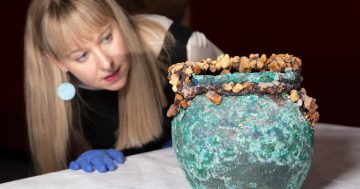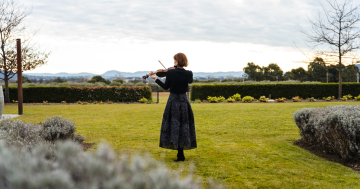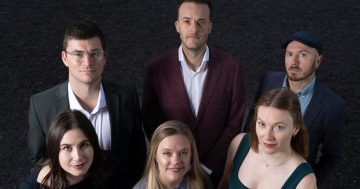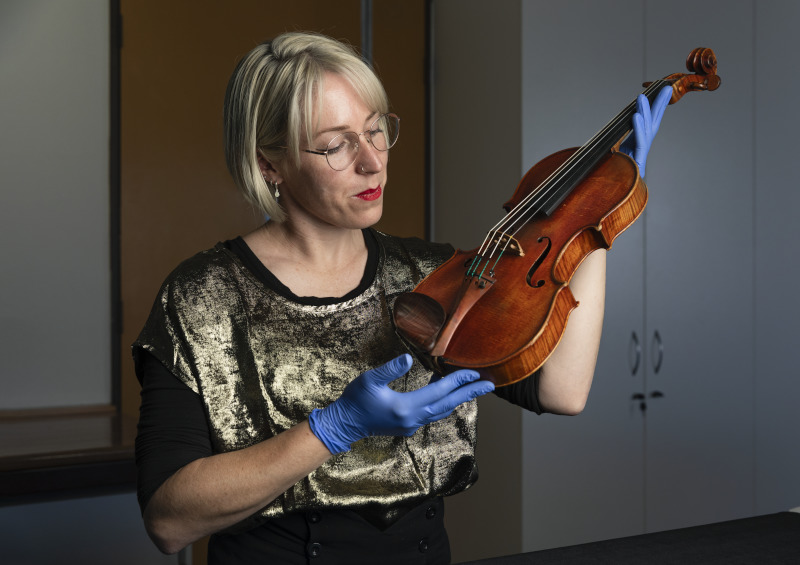
National Museum objects conservator Jennifer Brian checks the condition of one of the Smith violins to be played in the 9 October performance. Photo: Jason McCarthy, National Museum of Australia.
Music, storytelling and remarkable Australian history will come to life at the National Museum of Australia (NMA) in a one-night-only concert in Canberra featuring some unique musical instruments.
In a joint production between the NMA and Canberra Symphony Orchestra (CSO), the string instruments – two violins, a viola and cello – made by legendary Australian maker Arthur Edward Smith will be “woken” for the one-off performance on 9 October.
Smith made the four instruments during his “golden period”, spanning the 1940s to the mid-1950s, and were acquired for the National Historical Collection just before his death in 1978. The cello was last played in 2008 by acclaimed musician David Pereira who lived at Gunning, just outside Canberra, for many years.
NMA director Katherine McMahon said the CSO musicians “worked with us to ‘wake up’ the instruments and will be playing a program of classical and contemporary music that celebrates Smith’s legacy”.
CSO chief executive officer Rachel Thomas said the musical collaboration with the NMA was key to what the orchestra was all about.
She described it as a “national leader in championing Australian music, commissioning new works and bringing diverse Australian voices into mainstream programming”.
Ms Thomas said the orchestra was also committed to preserving and promoting the rich history of Australian music.
“This collaboration with the NMA is a wonderful opportunity for our musicians to blend past and present and deliver a unique experience for visitors,” she said.
“We already have a strong partnership with the National Museum to stage our popular Australian Series concerts in the museum’s Gandel Atrium.
“The AE Smith collection performance is another exciting way to bring live music to the public within the surrounds of one of Australia’s most significant cultural institutions.”
The NMA’s head of programs, Jessi England, described the one-off performance as “an extraordinary musical experience for audiences”.
“More than a concert, this event combines music, storytelling and conversation and will be a unique opportunity to hear the National Museum’s AE Smith quartet brought to life,” she said.
“Audiences will also hear from the National Museum’s curators and conservators, discovering the remarkable stories behind these instruments and their maker.”
NMA conservator Jennifer Brian said the AE Smith collection represented a “remarkable piece of Australia’s musical heritage and history”.
“As a musician and instrument conservator, my passion is to celebrate the sonority and other intangible aspects of musical instruments in collections,” she said.
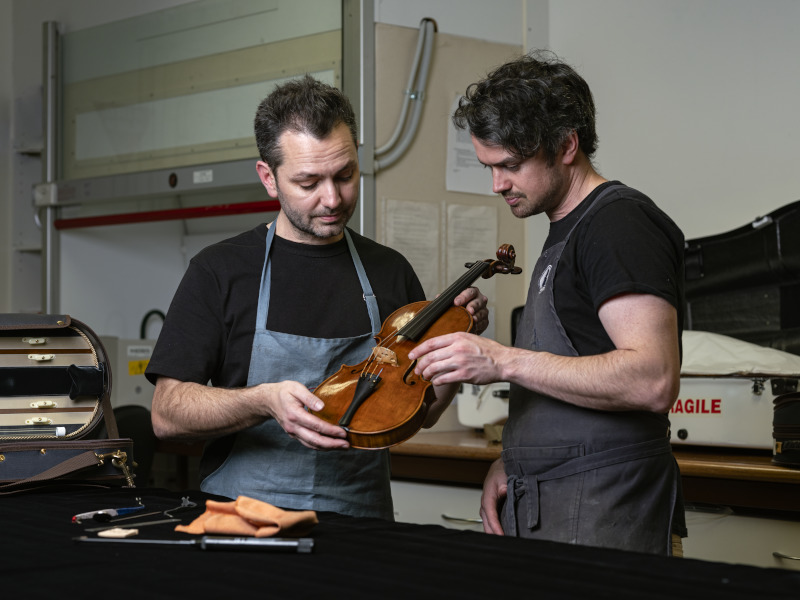
Luthiers Douglas and Max Glanville inspect the AE Smith instruments prior to the performance by the CSO quartet on 9 October. Photo: Jason McCarthy, National Museum of Australia.
“It is a privilege to be able to allow these instruments to sing again. By playing this quartet we can preserve their sound as well as their intangible meanings with our audiences. Looking at a musical instrument sitting in silence is like looking at a ballet dancer standing still. You can imagine their movement, but you are not transported into the world of ballet.
“Allowing these instruments to sing again and recording those sounds, alongside the musicians’ experiences of playing them, gives us a much richer understanding of just what makes these instruments so extraordinary.
“This performance not only brings the skill of AE Smith into the spotlight, but also illuminates the unbelievable talent that Australia has produced at the top echelons of musical instrument making.”
The musical program includes Mozart’s String Quartet No 17, The Hunt, Borodin’s String Quartet No 2 and Australian composer Sally Greenaway’s The Murray and the Mountain. CSO musicians Douglas Macnicol (violin), Pip Thompson (violin), Lucy Carrigy-Ryan (viola) and Samuel Payne (cello) will awaken the instruments.
Resonances: Performing the AE Smith Collection is on at the National Museum of Australia, Canberra, Wednesday 9 October from 6 pm to 7:30 pm. Bookings essential.
Original Article published by Sally Hopman on Riotact.



